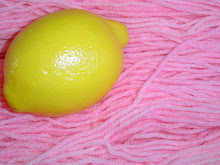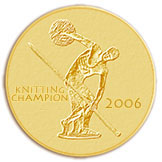A New Project
 At the end of last year, I joined the Spunky Eclectic's Fiber of the Month Club. I signed up for the double batch of fiber (usually 8 ounces of fiber a month unless it's a luxury fiber, then it can be 4 ounces) because I figured 8 ounces would give me more to play with and also I feel like her price is REALLY reasonable, so why not? This is the January Fiber - Icelandic wool in the Snow Squall colorway. When I saw it in the bag, my heart did a little flip - I love these colors (they actually photographed a bit lighter than they really are). But when I stuck my hand in to feel the fibers, I realized that this was both coats of the Icelandic sheep.
At the end of last year, I joined the Spunky Eclectic's Fiber of the Month Club. I signed up for the double batch of fiber (usually 8 ounces of fiber a month unless it's a luxury fiber, then it can be 4 ounces) because I figured 8 ounces would give me more to play with and also I feel like her price is REALLY reasonable, so why not? This is the January Fiber - Icelandic wool in the Snow Squall colorway. When I saw it in the bag, my heart did a little flip - I love these colors (they actually photographed a bit lighter than they really are). But when I stuck my hand in to feel the fibers, I realized that this was both coats of the Icelandic sheep. (OK, I'm going to go all Animal Planet on you here and explain about dual coated sheep now - if you don't care, skip to the end of the paragraph.) A long time ago, back when our ancestors were living in small villages, living off the land in a more simple lifestyle - without electricity or all of our modern conveniences (no, not the 1960's - earlier), each village would have some sheep. Now they would be grazed all together (it makes it easier that way), even if they had different owners. This meant that all the sheep within a certain area were the same type of sheep - you didn't have a bunch of different breeds grazing together because sheep who graze together also breed together so any differences would be pretty much bred out (I'm not saying that some sheep might not have finer or coarser coats than other sheep in the communal flock, but if we were to look at the sheep of any given area, we would define it as a breed today.) If you only had one type of sheep in your area, that type had to provide everything - meat, wool for rugs and blankets, wool for outerwear, and wool for your baby's clothes. That's a pretty steep demand for any one sheep, but if a sheep had a dual coat, it was more useful for the multipurpose function it served in the community. The coarser wool came from the outer coat, while the undercoat was much finer, and by blending the two coats together you could spin a nice medium purpose yarn. This is why the more ancient breeds of sheep have a dual coat - they served many purposes in their communities. (Merinos didn't come along until later, when Western Civilization was more "civilized" and sheep could be bred for specific traits without sacrificing the community's ability to survive.) So, since Icelandic is one of the ancient breeds (Shetland is also and if you go back far enough, they're related), it has two coats: the Tog or outercoat, and the Thel or undercoat.
This roving, while beautiful, definitely has both coats and is coarse enough to the touch that I know I won't want it next to my skin. I do think though that it will make a very nice outerwear cardi - not a cute, little, fluffy thing, but a functional, warm cardigan that should stand up to many year's worth of wear and not bat an eye. Unfortunately, 8 ounces isn't enough to make a cardi with. So I went stash diving and this is what I came up with:
 On the left is a Cotswold lambswool/Alpaca blend (Whipped Cream from Nistock Farms) which is soft and will also add drape. On the right are two colors of various finewools done in batts from Spinner's Hill (as far as I know, only available at fiber shows)- these will add a little bounce and softness. I will be adding 8 ounces of the Cotswold/Alpaca and 8 ounces total of the Spinner's Hill batts to the 8 ounces of the Icelandic.* I could spin up each fiber separately and then ply them, but I don't want a ragg yarn. I've decided that I will card all three types of fiber together to make a more blended yarn. Adding the white will give the yarn a bit of a heathered look and if the yarn spins up lighter than I'm wanting, I can always overdye it with a pale blue green to darken it up a bit. I've got a sneaky suspicion though that this will work without overdying.
On the left is a Cotswold lambswool/Alpaca blend (Whipped Cream from Nistock Farms) which is soft and will also add drape. On the right are two colors of various finewools done in batts from Spinner's Hill (as far as I know, only available at fiber shows)- these will add a little bounce and softness. I will be adding 8 ounces of the Cotswold/Alpaca and 8 ounces total of the Spinner's Hill batts to the 8 ounces of the Icelandic.* I could spin up each fiber separately and then ply them, but I don't want a ragg yarn. I've decided that I will card all three types of fiber together to make a more blended yarn. Adding the white will give the yarn a bit of a heathered look and if the yarn spins up lighter than I'm wanting, I can always overdye it with a pale blue green to darken it up a bit. I've got a sneaky suspicion though that this will work without overdying.
Clearly, I have quite a bit of blending to do before I start spinning, but I think it might be fun to blog this process (in other words, I'm dragging you guys along for the ride on this) and see if it all turns out the way I think it will.
*I read somewhere that to make a sweater with a 40 inch bust, you needed 12 ounces of yarn in a fine weight, 20 ounces of yarn in a medium weight (I assume medium weight to be worsted), and 28 ounces of yarn in a heavy weight. These weights only apply to wool, but if you look at patterns and figure out the weights of the yarns called for in a 40 inch size, this is pretty accurate. 40 inches is bigger than I usually knit for myself so by following these weights for fiber purchases, it comes out with some extra for "just in case." It's not a precise science, but this is what I use for my jumping off point when figuring out how much fiber to buy.
Labels: spinning










15 Comments:
Those are delightful bundles of fibre and thank you for the sheep history lesson!
I'm looking forward to being dragged along with you on this project!
Drag away! Not having learned to spin yet, your posts are always a great learning experience.
Lovely, lovely fiber!
I signed up for that fiber club, too. It is such a nice surprise when the package arrives. I have no idea what to make with mine (I ordered single servings until I can get a feel for what will be coming and whether it matches with me). I am looking forward to your blending/spinning documentation. Thanks for including us
The "formula" for figuring out how much fibre to have on hand is a great tip - thanks! I usually just plan on a pound of fibre so I can see why I'm often off a bit. I love your fibres and look forward to seeing what you get with them. Do you use a drumcarder or hand cards to blend? Or some other method?
Oh, the sheep coat lesson was quite informative, I certainly didn't know that. I loved the fiber for Jan too, not sure what I'll do with it. I haven't even gotten around to spinning my December fiber yet. Love the blending idea, are you going to blend it ALL together, or just blend the three and use it as a ply?
I have 4 oz. of the same stuff (I belong to her club, too), and I only have the 4 oz. I didn't know what I was going to do with it because it was so...um... heavy duty and only 4 oz., so it was just going to be practice - but it is a beautiful colorway - one of my favorites. So, if you'd like some more of the unspun fiber, you're welcome to mine...let me know!
Wow! I can't wait to read about this project.
Fascinating. Thanks for the Animal Planet lesson! I look forward to the ride ahead.
Looks like a really neat project you're cooking up. I'm sure the results will be fantastic. I really enjoyed the informational post!
pretty pretty colors. Sadly this is why I can't join fiber clubs....darn those fibers and my sensitive skin. I will truly enjoy watching you makes something out of this!!
I'm thinking hat for mine. I've been cold lately. Thanks for the interesting post. I'd never really thought about it before. I'm looking forward to seeing what you do with yours too. And thanks for that tip about figuring out yarn requirements. I'll have to make a note of that somewhere.
cool to learn about the double coats - i had no idea. as a non-spinner, it'll be fun to see you work up the different fibers. the colors look good together too.
I learned about that 12/20/28 ratio in Jacqueline Fee's "The Sweater Workshop Book", about 20 years ago. And it does make for a good ballpark figure.
Hm, interesting stuff. I wondered what I was going to do with my double dose. I'm sort of thinking stranded mittens with a lining. Thanks for the info on the sheepies, that definitely gives a clue as to the scratch factor.
I have searched my mind to describe the dual coat to people and you said it perfectly. I used to raise Icelandics and found the wool beautiful but prefer a non-dual coat breed. I think you'll love adding in the Cotswold - it is so easy to spin and the lustre is a great enhancement to any wool blend. It may help you to know, as well, that they are the sweetest animals. As things 1, 2, and 3 say, they are like 'big, fuzzy dogs'. Can't wait to see how you work this up!
Post a Comment
<< Home